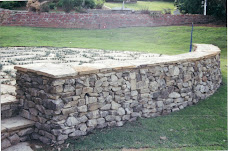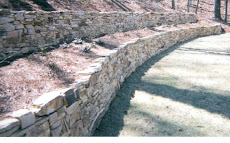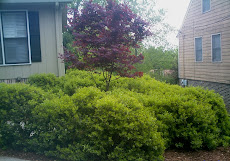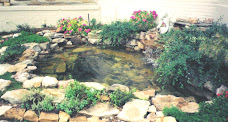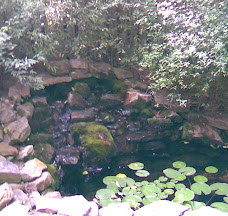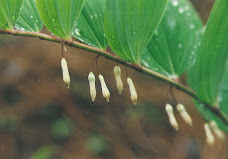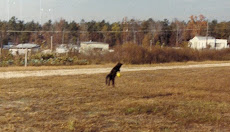
This is a snapshot I took while watching a sunlit sky above Lake Logan Martin through some oak trees. The view is courtesy of my mom, Melba, and stepfather, George, from the back deck of their old home, near Alpine Bay, Alabama. I thought I'd better sneak this post in as leaves will soon be filling up the trees throughout the South and this winter will become another chilly memory.
Friday, February 29, 2008
Winter sky sunset above Lake Logan Martin
Posted by
themanfromearth
at
7:31 AM
0
comments
![]()
Labels: Rob's musings
Sunday, February 24, 2008
An American Treat

As you are driving about during the remaining few weeks of winter, look out into the woods (preferably, as a passenger!), and notice one tree that has a specific characteristic that really catches your eye. I’m talking about American Beech (Fagus grandiflora). The eye catching characteristic is its winter leaf. Peering into a typically bare deciduous forest, American Beech catches your eye because they are so prevalent and easy to identify. This is so because American Beech trees hang on to most of last year’s leaves all the way through until spring when new growth pushes them off.

A close-up of Fagus grandiflora in leaf w/ fruit
Winter leaves of American Beech are very pretty, I think. The graceful, light tan leaves stand out and in the local woods here in Birmingham (they are native in the Eastern half of the US), where Beeches are so prevalent, the sight can become somewhat mesmerizing. American beech isn’t the only tree to hold on to its leaves through out the winter. Several oak tree varieties and other trees do so, as well, but not with the flair and beauty of the American Beech. So, be on the look out! American Beech trees can grow to 60’. They like acidic soil, which is exactly what we have in many parts of Central Alabama. It can be a difficult tree to transplant, so I advise purchasing one in a container, if you are considering planting one in your yard. Also, when hiking in some of our state parks, you'll often see where people (I'm not going to get on my high horse and say what I think of these people) have carved messages into trees. These trees are often American Beech trees. 
Other ornamental characteristics include its gorgeous smooth grey bark, light green summer leaves and bronze fall color.
"See how pretty I am
without initials inside
a heart and Cupid's
arrow etched on me!"
Posted by
themanfromearth
at
12:39 PM
0
comments
![]()
Labels: trees
Saturday, February 16, 2008
Crocus: A good choice for your garden

While it's probably a little late to be planting crocus bulbs, now, in the middle to late part of February, it's certainly worthwhile to store in your memory bank that crocus is a wonderful plant to introduce to your garden this upcoming fall. A post in my blog on crocus makes sense to me because the tiny, but tough, plant is in bloom all over Alabama, right now. Crocus is usually bought in the form of a bulb in October/November and planted around that time or a little after then. Crocus bulbs are about the size of a "Whopper" (you know, those delicious chocolate malt balls that come in the cute little milk cartons), and if you are buying really nice bulbs or one of the giant crocus types (it's all relative, as "giant" just means bigger than normal size), they may be one and a half or two times the size of a Whopper. I have planted a good many crocus bulbs over the years and know them to be one of the most reliable bulbs to grow. Crocus come in an abundance of varieties which include variations in size and bloom time, and in an assortment of colors, which can range from whites, to purples, to yellows, to blues, and also with stripes, to boot, if you want! One of the things I like the most about crocus is that they are easy to work into a garden, especially an experienced garden. They are small enough that you don't need to fret about where they possibly might look good and they bloom when not much else is going on, so they have a stage to themselves, so to speak. Another plus - following the old, but true, rule of planting bulbs 2 1/2 to 3 times deeper than the height of the bulb, crocus don't require that you expend unspeakable effort to plant them. I recommend digging a whole about 1 foot by 1 foot and put, oh, 6, 8 , 10 bulbs in the hole, then move a foot or two away and start the next hole. As always, remember to loosen the soil deeper than needed, and add some organic matter to the soil to help out with drainage. Crocus perform best at a ph of around 6 or 7, so if you know your soil to be more acidic than that, feel free to add a teaspoon of lime along with your bulb food, per 10 bulbs (or one large hole) as you plant them.
Posted by
themanfromearth
at
9:48 AM
0
comments
![]()
Labels: perennials
Saturday, February 9, 2008
Wonder Plant!


This is Winter Jasmine that I planted on a steep embankment in the Crestwood area of Birmingham. I also used landscape fabric which contributed to the clean, weed free environment the jasmine is growing in.
I should temper my enthusiasm, lest I become remininscent of magazine ads proclaiming "watch it grow, it's just that fast" or "a few small pots will become an orchard in mere months!" BUT! I am impressed with this plant - Winter Jasmine. It's a mostly evergreen, medium sized shrub that has cute yellow blooms in the winter (yes! the winter) and will tolerate a variety of conditions. Given its tendency to root where ever a stem touches the ground, it's a great plant for difficult slopes, yet despite the tendency to root, it will not quickly become an intruder on your other plants. Winter Jasmine is very cold hardy for our area and easy to grow. No, it's not super showy in bloom, like a crepe myrtle, for example, but I have seen quite a few very nice stands in bloom. I'd definitely suggest using a grouping to make an impact. Note: Be sure to distinguish Winter Jasmine (Jasminun nudiflorum) from Showy Jasmine (Jasminun floridum) or Primrose Jasmine (Jasminum mesnyi). While those are nice plants, they grow larger than Winter Jasmine and are not as cold hardy.
In conclusion, I recommend Winter Jasmine because they:
1. are easy to grow
2. blooms when almost nothing else is
3. are cold hardy for the Central Alabama area
4. are good for erosion control
5. can be found in a one gallon size, which is good for the pocket book
6. grow moderately fast, but not to a fault
7. perform well in full sun or part shade
8. can put on quite a show when in bloom
Posted by
themanfromearth
at
11:06 PM
0
comments
![]()
Labels: evergreen landscape plants





